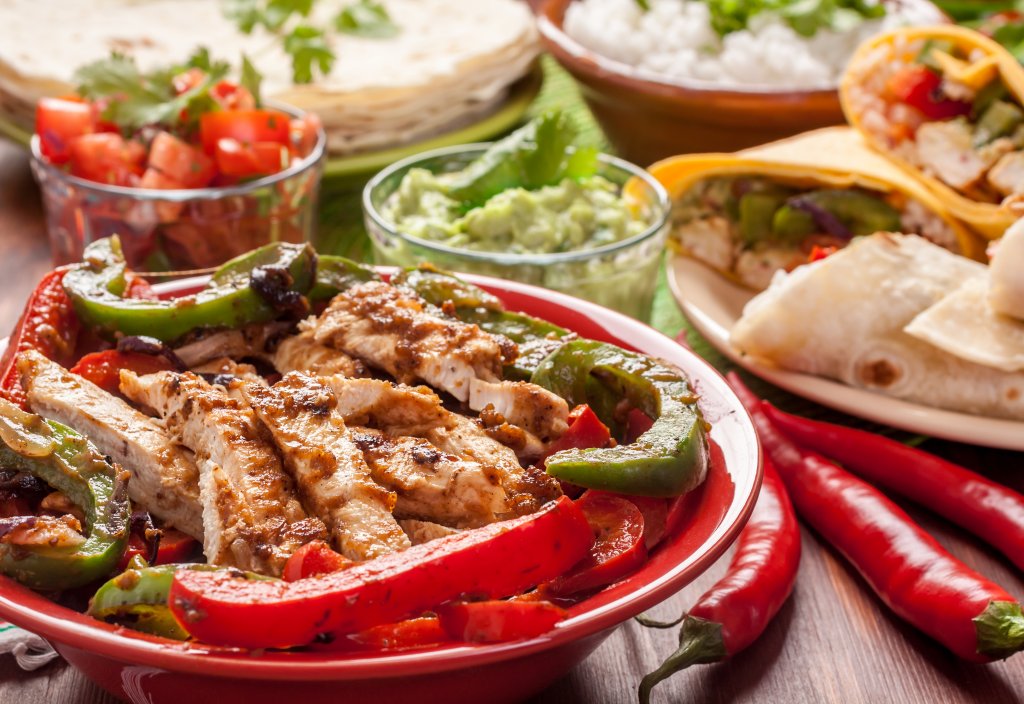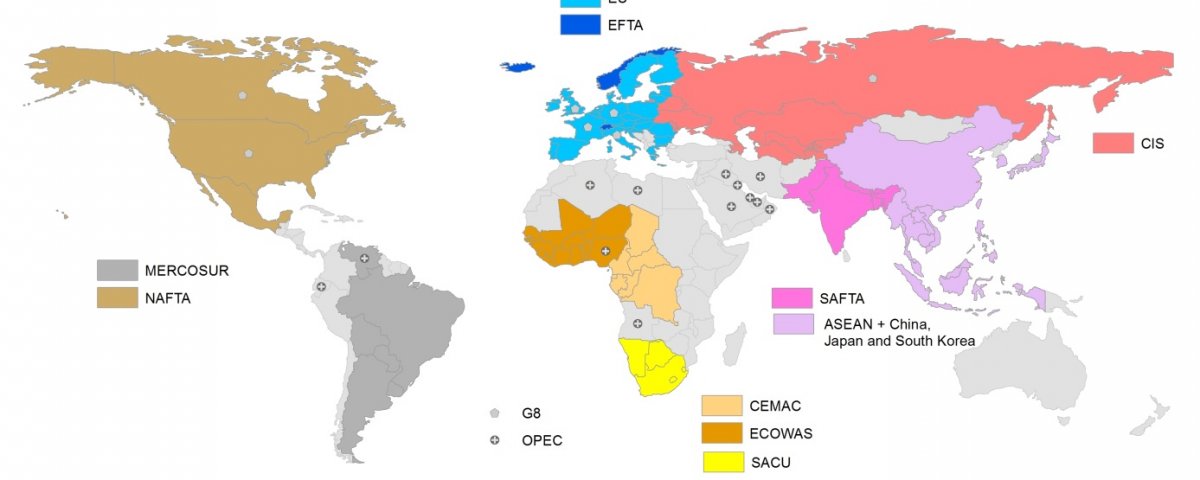The continuous compliance frameworks on FCM across nations in the show: Mercosur, FCM – Mercosur, Mexico, Australia and New Zealand.
FCM – Mercosur
The Mercado Común del Sur (Mercosur; administración nacional de medicamentos, alimentos y tecnología médica, ministerio de salud de argentina) is a regional group of countries that aims to promote trade. It is composed of Argentina, Brazil, Paraguay, Uruguay and Venezuela as regular members, Chile, Bolivia, Colombia, Ecuador and Peru as associate countries and New Zealand and Mexico as observer countries. It issues regulations as “Grupo Mercado Común” (GMC) that are applied by its MSs. In the field of food packaging the framework resolution on FCM is the GMC 3/9 (mercosur/gmc/res nº 03/92- criterios generales de envases y equipamientos alimentarios en contacto con alimentos) that sets general requirements for FCM (considered as food additives) such as that they should not pose risks for human health, alter unacceptably the composition or the taste of foods, be manufactured according to GMP, and be of suitable purity. It establishes positive lists for components of FCM (GMC 31/99 – Regl. Técnico Mercosur sobre criterios generales de actualización de listas positivas de componentes de envases y equipamientos en contacto con alimentos. SGT Nº 3) and criteria for purity requirements and limits of migration. It also provides analytical methods for controls (GMC 10/95 (10/95 Determinación de la migración total de materiales plásticos en aceite de oliva como simulante graso) for overall migration, GMC 32/99 – Regl. Técnico Mercosur sobre metodologías analíticas de referencia para control de envases y equipamientos en contacto con alimentos). Mercosur’s standards for food-contact materials apply to housewares (i.e. disposable cups, plates, utensils, and other articles used to serve or dispense food for fairly immediate consumption), and to equipment used with food. Besides this regulation, specific measures on plastics exist, such as GMC 30/92 – Envases y equipamientos plásticos en contacto con alimentos: clasficación de alimentos y simulantes, 56/92 – Disposiciones generales para envases y equipamientos plásticos en contacto con alimentos, 87/93 – 05/95 Lista positiva de polímeros y resinas para envases y equipamientos plásticos en contacto con alimentos, 32/97 – Regl. Técnico Mercosur sobre la incorporación de la Tabla Nº 1: clasificación de alimentos simulantes, como anexo de la res. nº 30/92 – GMC “envases y equipamientos plásticos en contacto con alimentos: clasficación de alimentos y simulantes” on simulants amending 30/92. Specific measures also exist for metals such as GMC 30/99 – Regl. Técnico Mercosur Complementario de la Res. Nº 27/93 – GMC, sobre migración de compuestos fenólicos en envases y equipamientos metálicos en contacto con alimentos, 46/06 – providing a positive list. Provisions are available for cellulose in the form of GMC 19/94 – Disposiciones Generales sobre envases y equipamientos celulósicos en contacto con alimentos, amended by GMC 35/97, 20/00, as well as GMC 56/97 – Regl. Técnico Mercosur sobre lista positiva para envases y equipamientos celulósicos en con- tacto con alimentos – providing a positive list, GMC Nº 12/95 – ensayo de migración total de envases y equipamientos celulosicos – providing overall migration tests, and GMC 52/99 – Regl. Técnico Mercosur sobre material celulósico reciclado – on recycled materials. In the case of adhesives, GMC 27/99 – Regl. Técnico Mercosur sobre adhesivos utilizados en la fabricación de envases y equipamientos destinados a entrar en contacto con alimentos – regulates indirect and 28/99 – Regl. Técnico Mercosur sobre la lista positiva para envases y equipamientos elastométricos en contacto con alimentos – direct contact as pressure sensitive adhesives under the elastomers resolution. Elastomers are addressed in GMC 54/97 – Regl. Técnico Mercosur sobre envases y equipamientos elastométricos destinados a entrar en contacto con alimentos – and GMC 28/99 and glass and ceramics in GMC 55/92 – Envases y equipamientos de vidrio y cerámica destinados a entrar en contacto con alimentos. Positive lists are available for additives for plastics, cellulose and elastomers. Mercosur GMC defines FCS as any primary container or any primary wrapping or container in contact with food. Finished packages should be registered before being allowed on the market (not in Brazil). Thus, while the general principles of the Mercosur’s standards are applied in all 5 MSs, national provisions for registration and approval of products might differ. Analytical methods to determine overall migration are regulated by GMC 32/99.
Argentina applies Mercosur measures and FCMs are regulated by the chapter IV of the Codigo Alimentario Argentino (CAA). All new substances to be inserted in positive lists must be sent for approval to the National Committee of Food (CONAL, Advisor scientific body, providing support and monitoring to the National Food Inspection System – SNCA- that enforces the Argentine Food Code) that submits the request to the dedicated working group of Mercosur.
Brazil applies Mercosur measures. All new substances to be inserted in positive lists must be sent for approval to the Agencia Nacional de Vigilancia Sanitaria (ANVISA) that submits the request to the dedicated working group of Mercosur. Brazil since 2000 does not require anymore the registration of the finished packaging before sale (unless it is manufactured with recycled materials).
FCM – Mexico
FCMs in Mexico are not defined per se but fall under a larger class as substances allowed as additives and processing aids in foods, beverages and nutritional supplements – ACUERDO por el que se determinan las sustancias permitidas como aditivos y coadyuvantes en alimentos, bebidas y suplementos alimenticios) (Secretaría de Salud México 1999). They are regulated by the provisions titulo 24 of Reglamento de Control Sanitario de Productos y Servicios – that establishes general principles, such as that any substance that might migrate from FCM into foods, without endangering human health, is considered as indirect additive – Secretaría de salud, Mexico.

The Reglamento classifies packaging based on their physical, chemical, toxicological characteristics through specific norms (such as to be inert, or be insoluble in foods, not be toxic, be free from heavy metals). No specific procedure exists for positive list or authorisation of substances, and producers might consult with authorities to ensure their products are allowed on the market. New standards will be based on FDA documentation.
FCM – Australia and New Zealand
FCM are defined as any material that come into contact with foods and they are regulated by standard 1.4.3 (that recalls provisions of Standard 1.4.1) of the Australia New Zealand Food Standards Code, that only sets that FCM should not cause any harm – Supporting document 2 International regulations for FCMs – P1034 Chemical Migration from Packaging into Food (Australia New Zealand Food Standards); Australia New Zealand Food Standards Code. Standard 1.4.1 then fixes maximum levels of contaminants in foods that might also come from FCM. At present submitting an application for FCM is not mandatory if substances are approved in EU or in USA. Current discussions may render future compliance with EU or FDA requirements under the Standard Code mandatory. The Australian Standard AS 2070-1999 on Plastics filler materials for food contact use provides measures on plastics, including processing aids, additives/colorants, printing inks, coatings and manufacture of multi layer products. Compliance with this standard though is not mandatory but voluntary.


1 Comment
It works really well for me